Decoding the flags and banners seen at the Capitol Hill insurrection
Many in the rabid mob who stormed the US Capitol yesterday came armed with a portable and potent weapon: a flag. There were large election banners, battle colors from the American Civil War, neo-Nazi flare, Christian symbols, and a smattering of national and state flags. Seen as a whole, they serve as a twisted ideological quilt for those who believe that the US election was stolen from incumbent president Donald Trump.
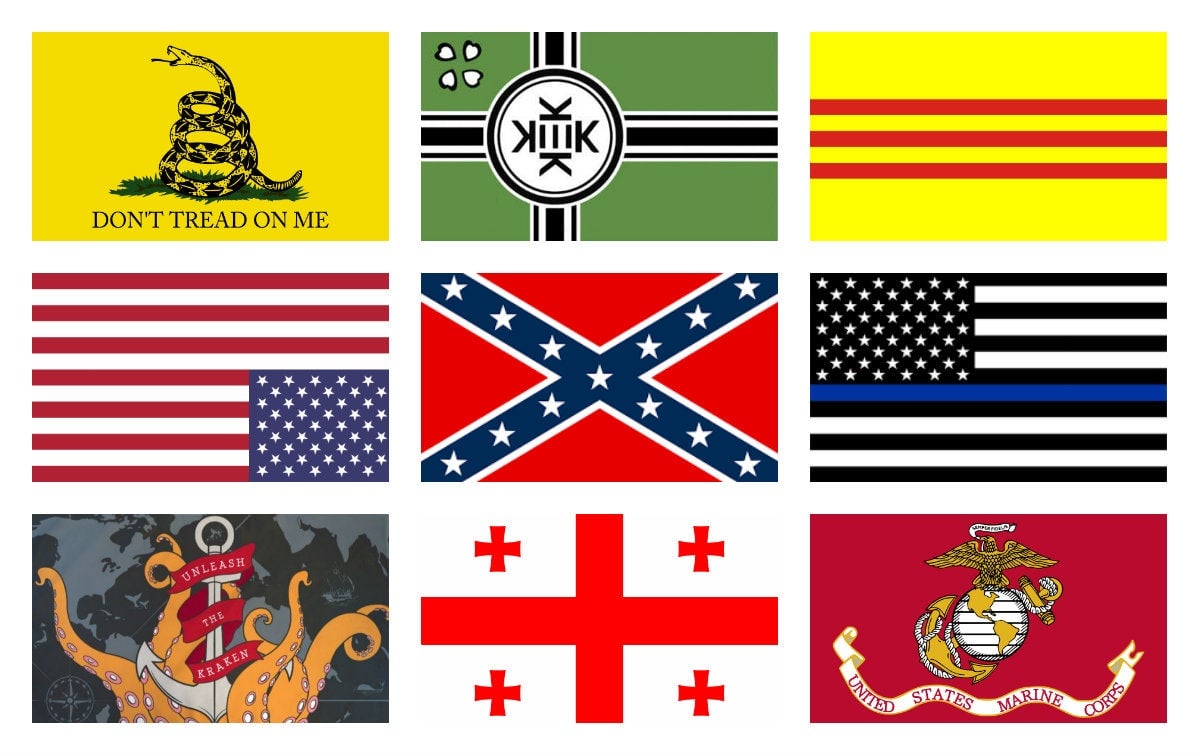

Many in the rabid mob who stormed the US Capitol yesterday came armed with a portable and potent weapon: a flag. There were large election banners, battle colors from the American Civil War, neo-Nazi flare, Christian symbols, and a smattering of national and state flags. Seen as a whole, they serve as a twisted ideological quilt for those who believe that the US election was stolen from incumbent president Donald Trump.
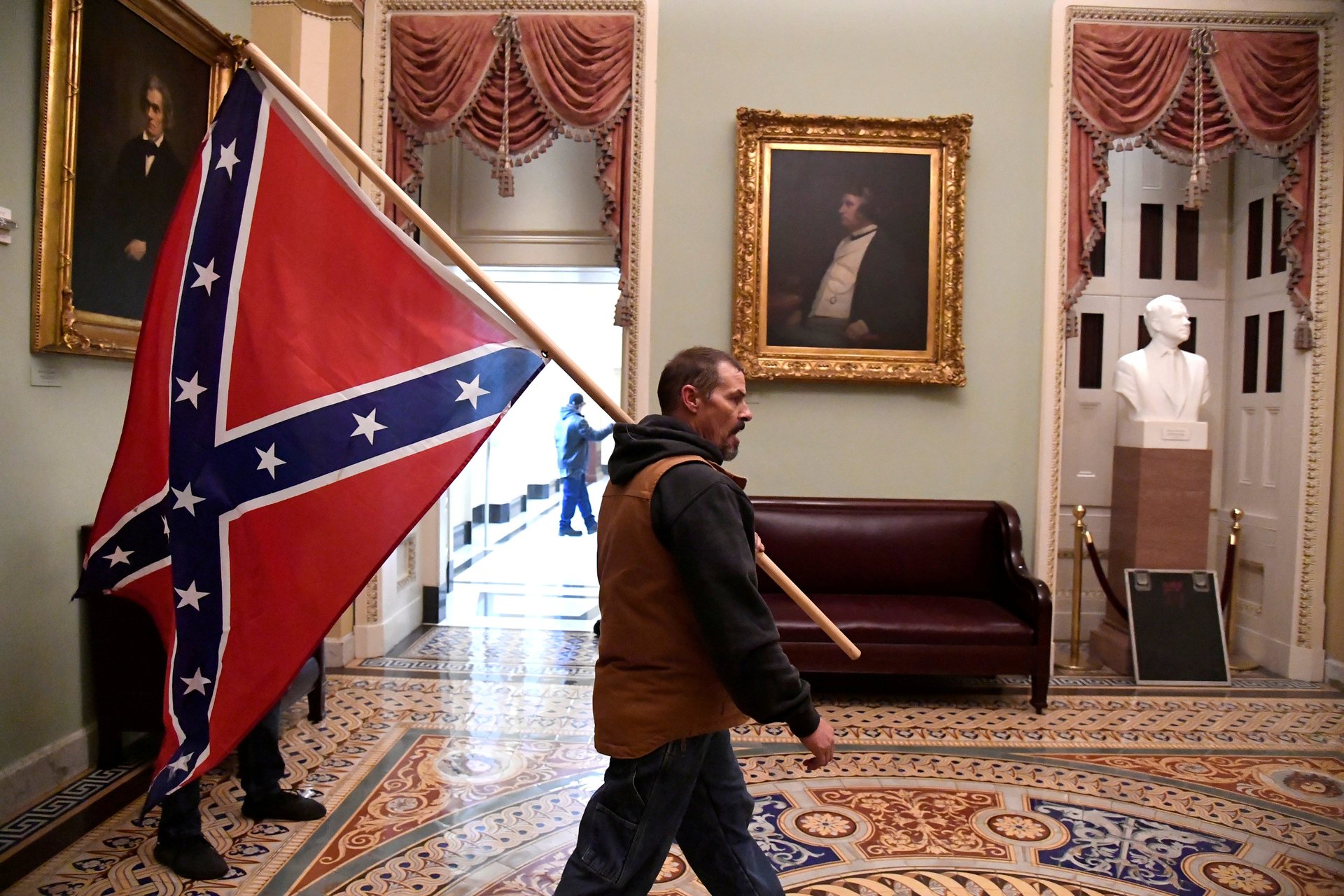
Of the various flags paraded around the seat of the US legislative branch, the most incendiary was a battle pennant from the Confederate army. Widely appropriated by white supremacists as a hate symbol, the “Southern Cross” never has been paraded publicly inside the Capitol before, historians point out. “It’s an outright affront to the government in its entirety,” says Antaeus Edelsohn, a University of Richmond law student and vexillology enthusiast.
The ensign featuring St. Andrew’s cross with 11 stars was designed to identify Confederate soldiers through the mist, fog, and gunpowder in the battlefields, Edelsohn says. “Its purpose is specifically to stand out and say ‘we are against the United States; we are against the union.’”
Laura Scofield, a graphic designer and member of the North American Vexillological Association, contends that flags are “the most powerful artifact ever designed.” Graphic marks, she explains, instantly gain emotional weight when emblazoned on a piece of cloth. “They’re powerful because they’re visible symbols of our identity,” Scofield says. “More than a cardboard sign, flags are dynamic. They communicate ideas quickly especially when hoisted to the heavens.” This contributes to the effect of a bigger, more unified rally behind a cause.
Surveying the footage, artist-activist Mirko Ilić recognized several neo-Nazi symbols in the crowd. As curator of the Tolerance Project and a scholar on white supremacist iconography, he says watching the mayhem at the Capitol felt a bit like déjà vu. “This is how things started in Yugoslavia,” notes Ilić, who was born in the former socialist republic. White supremacists cling to fascist iconography because Hitler’s army demonstrated how potent flags can be when seen en masse, he explains.
“In my opinion, branding was truly invented by Nazi Germany. It was total design,” Ilić says.“We have to be vigilant about these symbols because they’re like tea leaves. You can see the future.”
We took a closer look at the array of flags seen in this AFP photograph by Roberto Schmidt, which we obtained via Getty Images:
And that’s just a small sampling of the flags on display. For more detail on what we spotted in coverage of the insurrection, read on.
America First flag
Trump’s succinctly articulated foreign policy stance, immortalized in his 2016 inauguration speech, has been adopted by a” band of white nationalists and far-right activists spearheaded by 22-year old political commentator Nick Fuentes. They identify as “Groypers” or “America First boys”
Betsy Ross flag (1776)
An early version of the US flag, it has a circle of 13 stars in the corner, representing colonies that fought for independence during the American Revolution. Though not strictly a white supremacist symbol, it has been used by some extremist groups as an emblem of a more traditional (read: white and male-dominated) America.
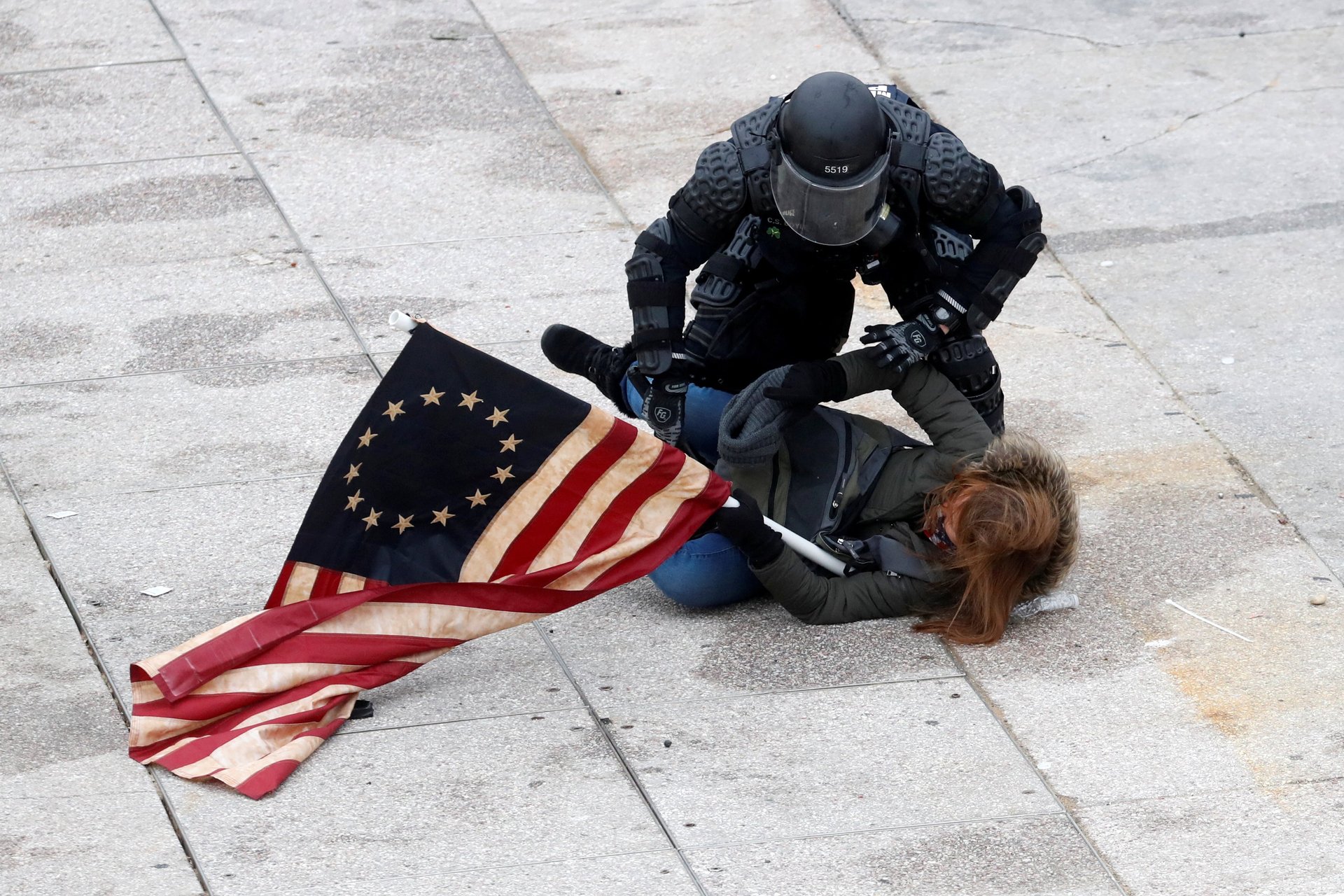
Calvin peeing on Biden
This flag was adapted from a decal featuring a bastardized version of the character Calvin, from the Calvin and Hobbes comic strip by Bill Watterson.
Come and Take It flag (1835)
A symbol of defiance created by a band of Texans who resisted Mexican forces in 1835, the flag features a slogan that has been co-opted by gun rights activists, abortion rights advocates, marijuana enthusiasts, and even McDonald’s. But the phrase was originally a battlecry for Texan independence.
Culpeper Minutemen (1775)
This flag was used by militias around the town of Culpeper, Virginia, during the American revolution, when “minutemen” (troops ready for duty in “a minute’s warning”) got their name. The group’s rattlesnake flag bear the words “ “Liberty or Death” and “Don’t Tread on Me“
Gadsen flag (1777)
The yellow flag, with a coiled rattlesnake and the words “Don’t Tread on Me,” has origins before the American Revolution, but has recently been used by the tea party movement, militia groups, and even in sports branding. Now, the flag tends to symbolize opposition to restrictions and government oppression.
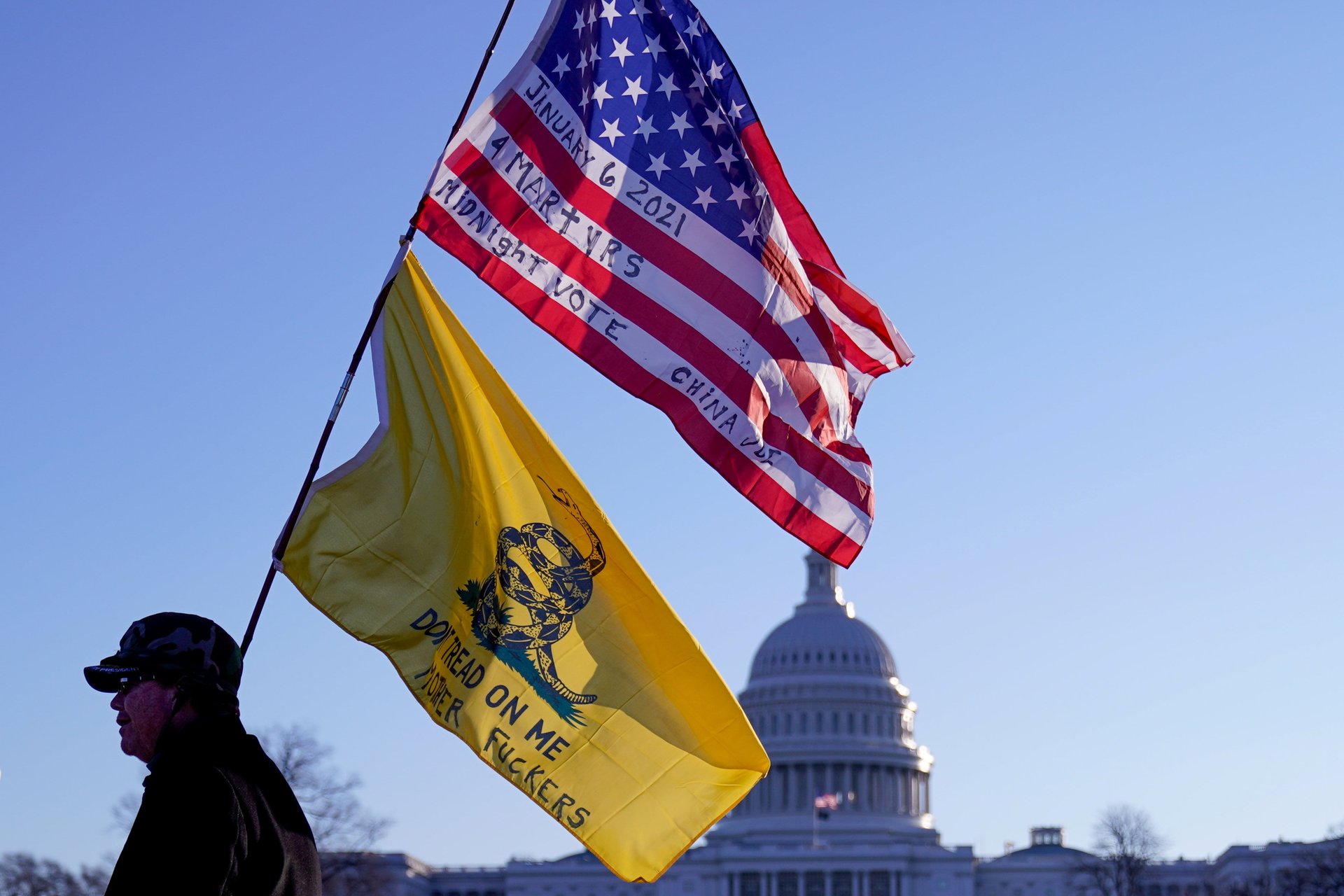
Ichthys
This symbol, used by ancient Christians, has been adopted by several conservative, religious groups supporting Trump. (Several protestors also held up a Trumpian pirate flag with the words “Jesus is My Savior, Trump is My President.”)
QAnon
Flags bearing the capital letter Q signal believers of the discredited far-right conspiracy theory that a group of Satan worshipers are plotting to take down Donald Trump.
Republic of Kekistan flag
This flag first appeared in 4 Chan in 2017, as a symbol for the made-up sect who worship Kek, the ancient Egyptian deity of darkness.
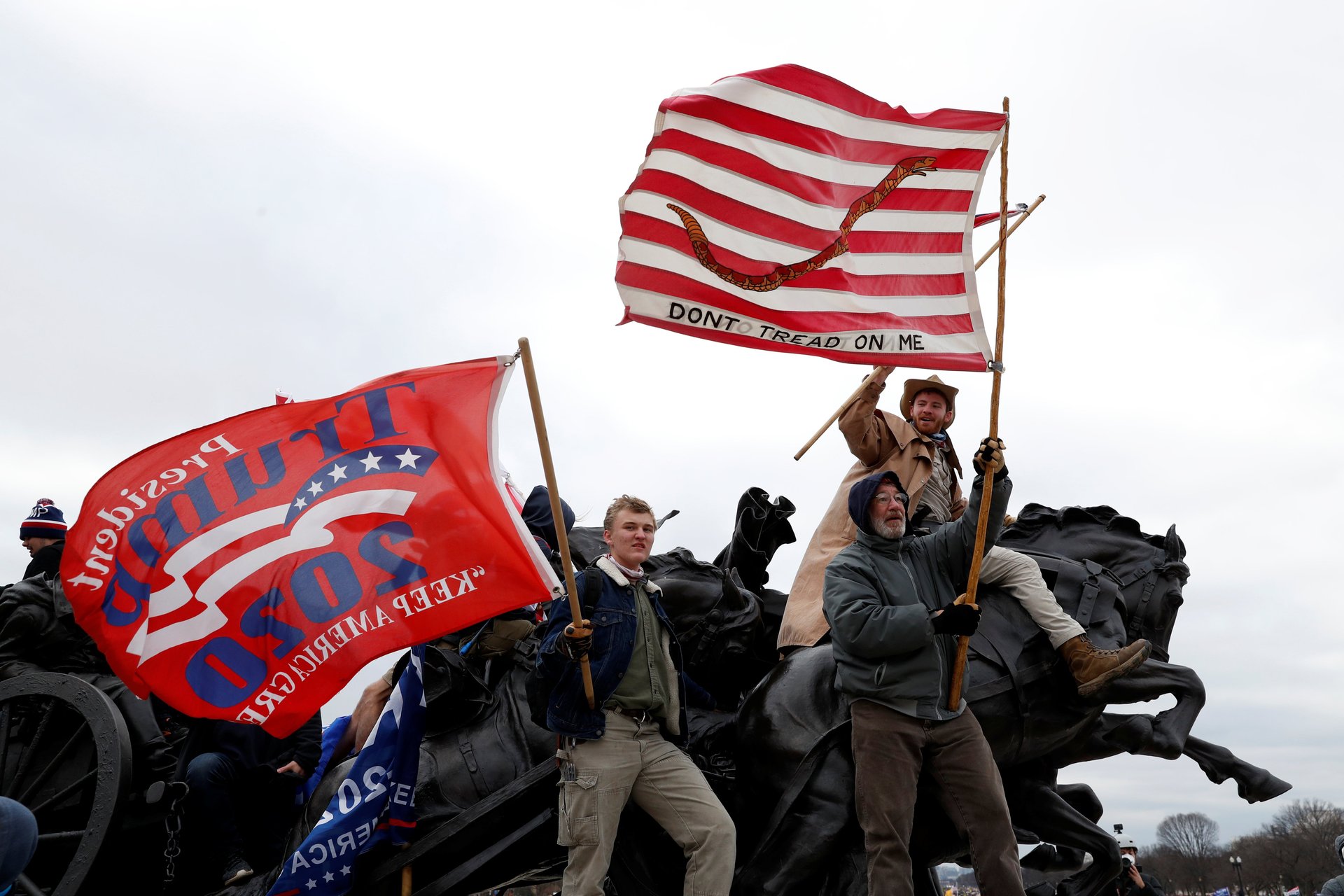
South Carolina Navy ensign (1778)
Used by South Carolinian naval fleets during the American Revolution and the Civil War, it features a rattlesnake against a field of 13 stripes.
Stop the Steal flag
This flag features the battle cry for the right-wing conspiracy theory that falsely posits that there was widespread fraud during the 2020 US presidential election.
Thin blue line flag (1922)
For some, the black and white US flag with a blue line through the center is a symbol of police solidarity. However, it has also been flown by white supremacists at gatherings like the 2017 “Unite the Right” rally in Charlottesville.
Three Percenters flag (2008)
The Three Percenters are an American-Canadian faction described by the Anti-Defamation League as “anti-government extremists who are part of the militia movement.” Their name is derived from the unproven claim that only 3% of Americans fought for independence during the American Revolution. Their flag is similar to the Betsy Ross flag, with III (the Roman numeral for three) in the middle of the circle of stars.
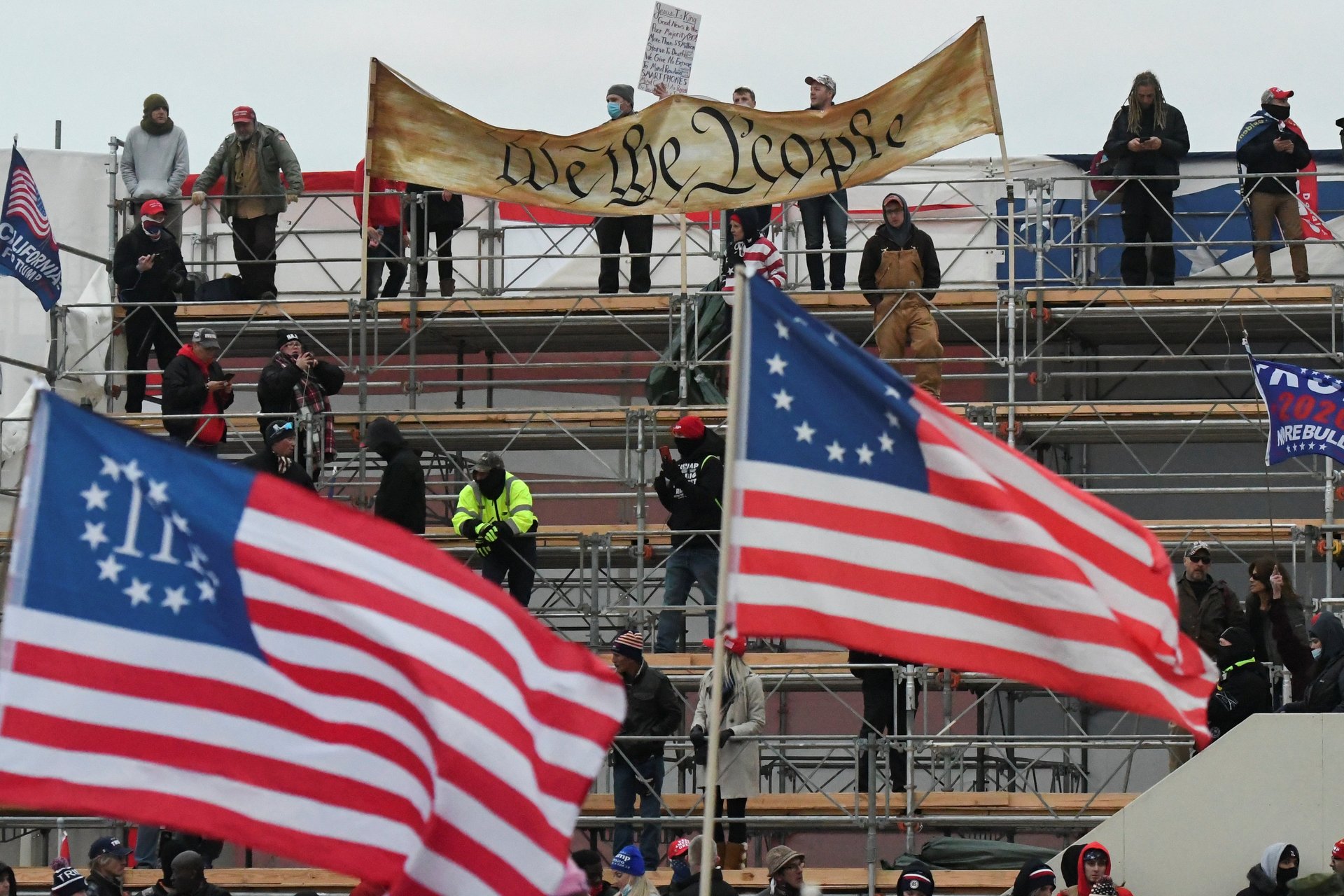
Trump 2020 banners
An enormous Trump campaign banner was the most visible flag draped in front of the US Capitol. Several protestors also held up Trump 2024 flags, alluding to Trump’s suggestion that he may run for office again.
Trump Rambo flag
“No man, no woman, no commie can stump him.” A cheesy incarnation of Trump as Vietnam vet John Rambo, from the movie franchise starring Sylvester Stallone, this flag was a common fixture at Trump rallies during the US presidential campaign.
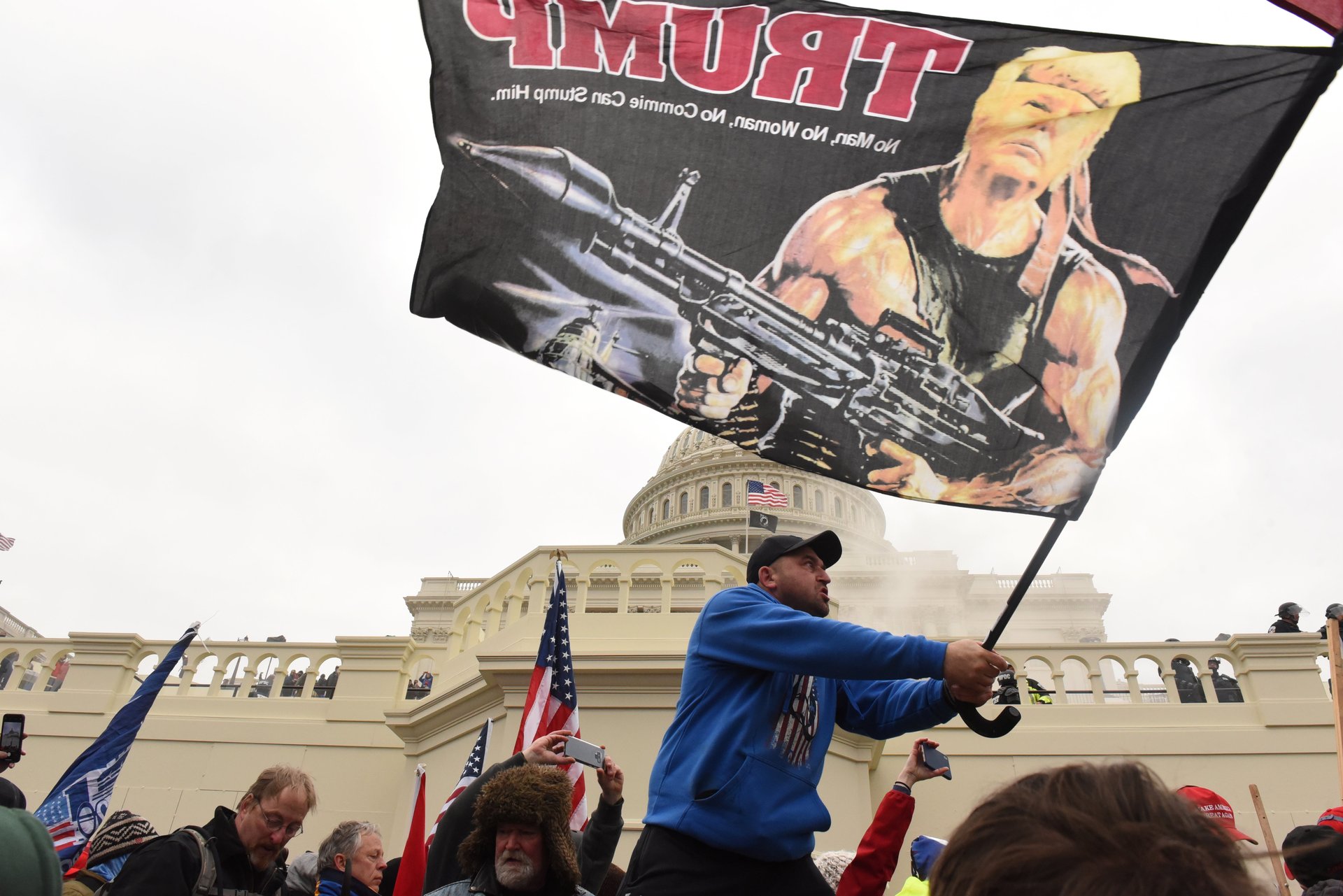
Unleash the Kraken
This is a reference to a threat by Sidney Powell, a member of the Trump legal team contesting the results of the US election. She was citing a line from the movie Clash of the Titans, where Zeus orders a monstrous a giant squid to destroy the city of Argo.
Upside down American flag
The US Flag Code stipulates that this can only be used in cases of “dire distress and extreme danger to life or property.”
US Marine Corps standard flag (1939)
Several protestors hoisted the red pennant of the US Marine Corps. A majority of military veterans voted for Trump, but his popularity among younger, active-duty personnel dipped during the last election cycle, according to a recent poll.
VDare/Lion Guards of Trump (2016)
This is the banner for an anti-immigration alt-right site founded by British-born columnist Peter Brimelow. Its lion motif is traced back to a quote from Benito Mussolini that Trump tweeted in 2016. It also has been used by the Lion Guard, a civilian group formed to protect Trump and his supporters.
Virginia confederate battle flag (1861)
This battle pennant first used by Confederate general Robert E. Lee’s troops in northern Virginia is often mistaken as the official flag of the pro-slavery Confederacy (it wasn’t). The Ku Klux Klan began using it as a symbol in the 1940s. The state of Mississippi removed it from its official state flag in 2020.
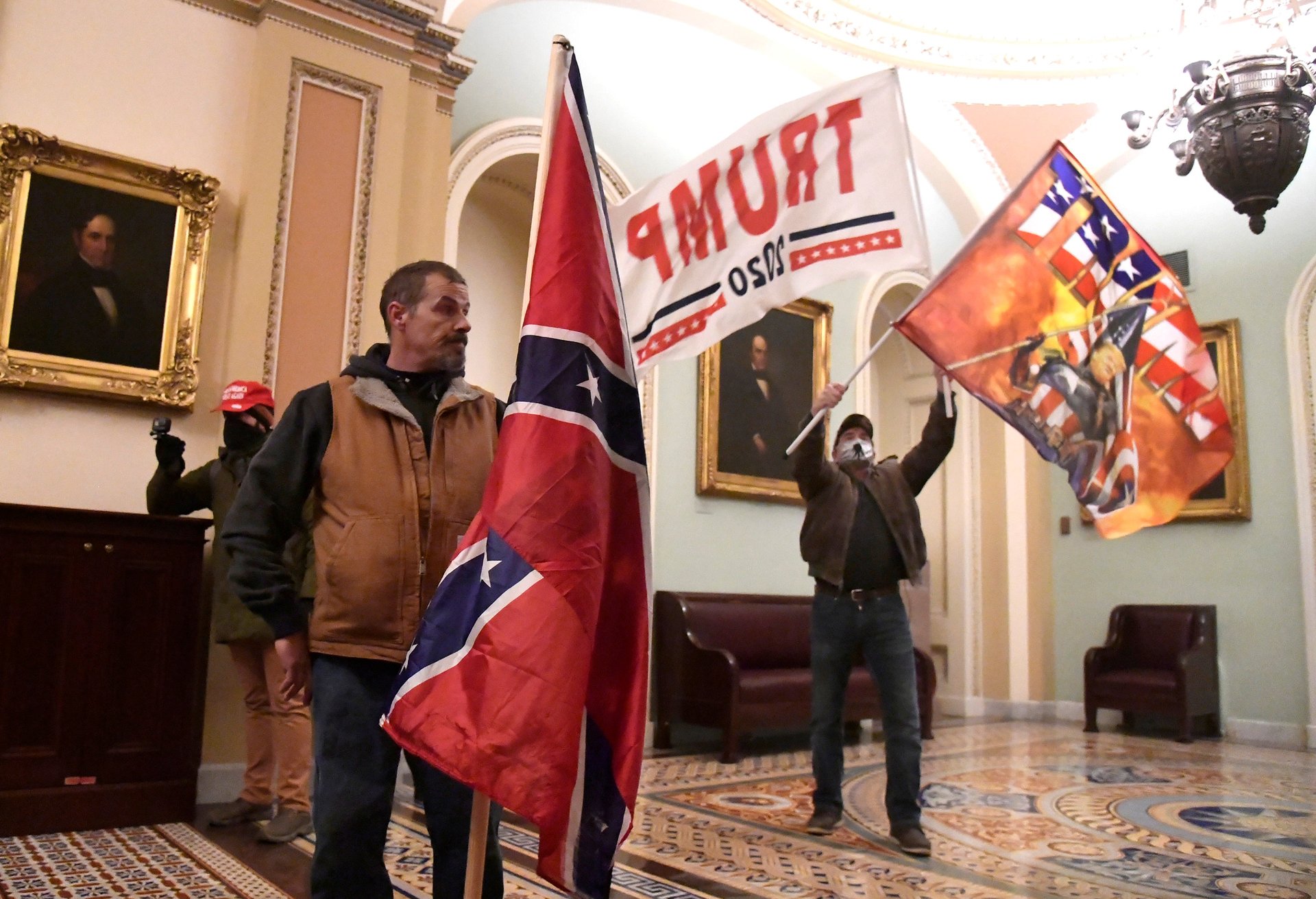
Miscellaneous flags
LGBTQ+ and pride flags
“Gays for Trump” showed up at the Capitol. Despite the president’s numerous attacks against the LGBTQ+ community, gay support for the Republican agenda doubled from 2016 to 2020.
Country flags
The flags of Canada, Cuba, Georgia, India, Israel, South Korea, and South Vietnam were spotted in the mob. It’s unclear why many of these flags appeared, though a number of the white supremacist and militia groups that were present have international chapters. For example, the presence of the Canadian flag could have been because the white nationalist group the Proud Boys was founded by a Canadian.
State flags
Georgia, Maryland, Texas: Several state flags were present. There was perhaps some confusion about the official state flag of Georgia, as the symbol of the Republic of Georgia. also was spotted on the scene.
Karen K. Ho contributed research to this story.